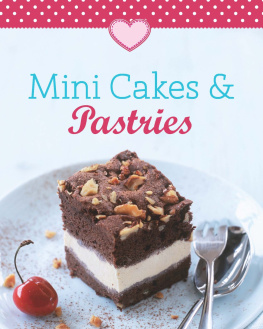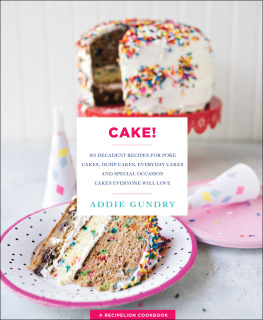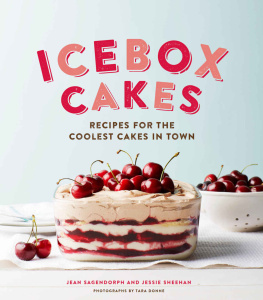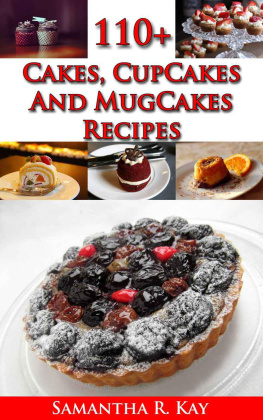The Harvard Common Press
www.harvardcommonpress.com
Text and photographs copyright 2014 by Deborah Harroun
All rights reserved. No part of this publication may be reproduced or transmitted in any form or by any means, electronic or mechanical, including photocopying, recording, or any information storage or retrieval system, without permission in writing from the publisher.
The Library of Congress has cataloged the print edition as follows:
Harroun, Deborah.
Red velvet lovers cookbook : best-ever recipes for everything red velvet, with more than 50 scrumptious sweets and treats / Deborah Harroun.
pages cm
Includes index.
ISBN 978-1-55832-834-1 (alk. paper)
1. Cake. I. Title.
TX771.H335 2014
641.86'53dc23
2014001626
Special bulk-order discounts are available on this and other Harvard Common Press books. Companies and organizations may purchase books for premiums or resale, or may arrange a custom edition, by contacting the Marketing Director at the website above.
Photographs by Deborah Harroun
e ISBN 978-1-55832-835-8
v1.0914
For Josh, Abbi, Easton, and Camden. Thank you for being my inspiration.
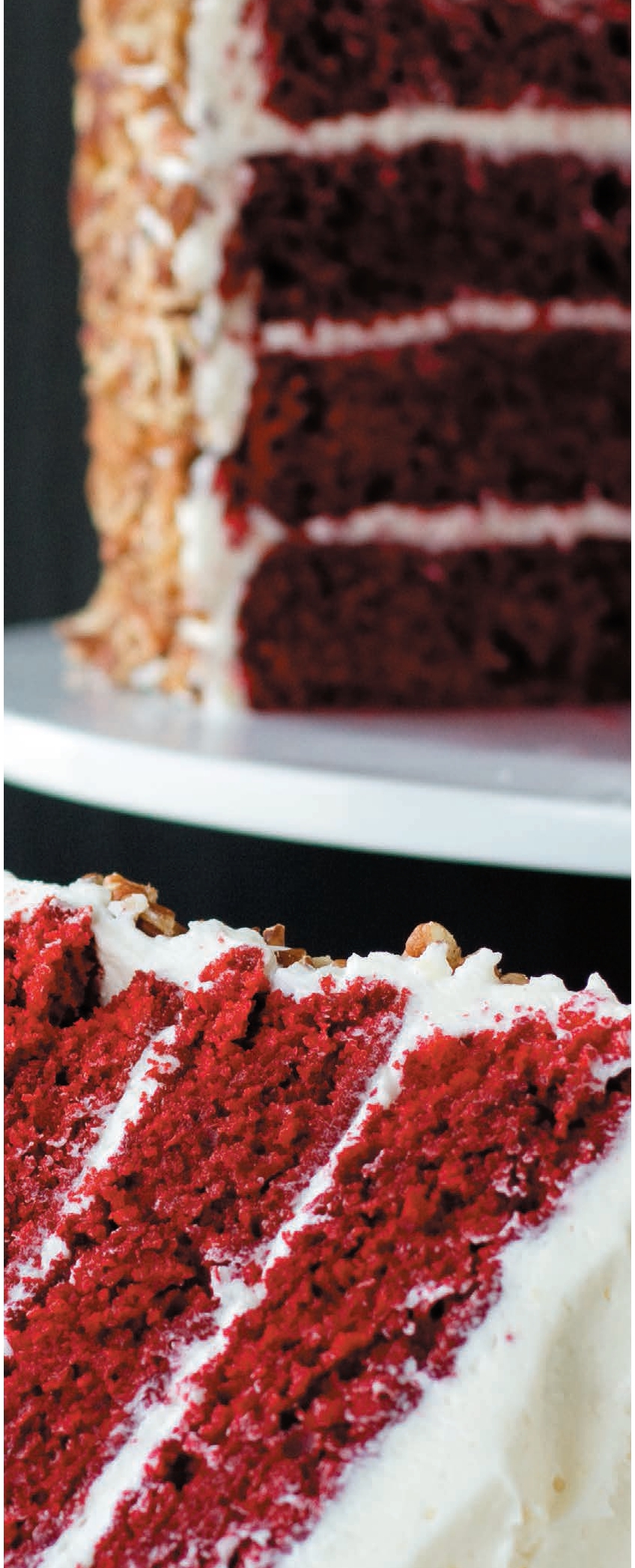
Introduction
I grew up in a small town in New Mexico, so red velvet cake wasnt part of my childhood. In fact, I think the first time I had even heard of it was while watching the movie Steel Magnolias. I remember looking at the red velvet armadillo cake covered in gray icing in the famous wedding scene and trying to decide if I was intrigued or appalled. Well, as it turns out, I was intrigued, because from that point on, I couldnt wait to try this cake.
It wasnt until I was grown and had moved away from home that I actually had my first taste of red velvet. From that moment, I was hooked!
So what exactly is red velvet?
As a lover of red velvet, I get asked this question quite often. And honestly, its a hard one to answer. Some will say that it is a chocolate cake that is dyed red. I disagree. Red velvet has only a light cocoa flavor. In fact, Ive heard it said that the only reason cocoa is used in the cake is that it masks the flavor of the red food coloring. I say that a red velvet cake or cupcakes taste like butter cake with just a hint of cocoa. It may be a hard flavor to describe, but once youve had it, you probably wont forget it!
I originally thought that serving red velvet would be a great way to mark Valentines Day. After all, red is the color of love, right? It is perfect for that holiday, but the more I made, the more I realized that Valentines Day is not the only celebration worthy of red velvet. The Fourth of July, Christmas, even Halloween (blood red, anyone?) are all perfect times to pull out red velvet recipes. But really, you dont need a special occasion to indulge in a little red velvet!
The Story of Red Velvet
The history of red velvet is not black and white. In fact, it is quite mysterious and shrouded in controversy. There are many stories about how red velvet came to be, where it actually originated, and who was the first to make it. There are even controversies over what kind of frosting goes on a traditional red velvet cake and what should be used to color the cake.
One of the most famous red velvet stories begins at the Waldorf-Astoria. It is said that the restaurant at this New York City hotel was the first to serve red velvet cake as we know it today. According to legend, a woman visited the Waldorf-Astoria, tried the cake, and fell in love. She wrote a letter to the hotel, asking if the chef would send her the recipe. The hotel did send her the recipealong with a bill for $350. In retaliation, she made copies of the recipe and distributed them high and low. While this story is entertaining, I doubt its authenticity; the same basic urban myth has also circulated about cookie recipes from Neiman Marcus and Mrs. Fields.
Another story claims that the recipe originated in Canada at the restaurant and bakery in Eatons department store. In the 1940s and 50s, the store promoted the cake as an Eatons original, invented by the wife of the owner of the store, Lady Eaton.
In the 1950s, a woman in Pennsylvania sent a recipe for Village Inn Red Cake to a newspaper recipe contest and won $5. And yet another story says the cake was created by Betty Adams during the Great Depression. Adams Extract, based in Texas, was one of the first companies to sell food coloring.
To market its red food coloring, the company printed the recipe for red velvet cake on tear-off cards that were placed by the food coloring on grocery store shelves. Adams claims its recipe is the one that popularized todays red velvet, which gets its bright red color from food coloring.
The origin stories of red velvet go on and on. But if you go back in time, there are mentions of so-called velvet cakes in cookbooks from as early as the late 1800s. It is assumed that velvet referred to the fine, moist, tender crumb of the cake. There are mentions of a red devils food cake in books from the 1920s, but many people speculate that the red wasnt for the color of the cake but because it was made from brown sugar, which was sometimes called red sugar back then. Some say that the natural cocoa powder used back then, combined with the vinegar and buttermilk, caused a chemical reaction that turned the cake a shade of red. Scientists debate this theory, though, saying that the amount of anthocyanins (red vegetable pigments) in the cocoa would have been too small to create a noticeable change in color.
More controversy swirls around the question of frosting for a red velvet cake. Most folks think cream cheese frosting is the only way to go. But many accounts suggest that a boiled frosting is traditional for a red velvet cake. While I am a sucker for cream cheese frostingand prefer it on my red velvet cupcakesI am a recent convert to using boiled frosting on my red velvet cake. Its a simple frosting that really lets the red velvet cake shine.
Regardless of its history, one thing is for sure. Red velvet is on the rise. And that armadillo cake in Steel Magnolias has been credited for bringing red velvet back into the spotlight. Today, it would be hard to find a cupcake bakery that doesnt feature a red velvet cupcake on its menu. Many of them say red velvet is their most popular flavor.
Red velvet also goes way beyond cakes and cupcakes. There are dozens of variations on the bright red concoction. Although some of these recipes may not have that famous velvet texture, they still sport the things that make red velvet distinctivethe hint of cocoa and the bright red color.
Dutch-Process Cocoa vs. Natural Cocoa Powder
There are two main types of unsweetened cocoa powder: Dutch process and natural. Dutch-process cocoa has been treated to neutralize its acidity. It is usually darker in color than natural cocoa powder, and baking powder is used in most recipes that call for Dutch-process cocoa; this type of cocoa should not be used with baking soda, which requires acidity to work properly. Natural cocoa powderthe cocoa powder called for in the recipes in this bookis made up of cocoa beans that have been simply roasted and then pulverized into powder. Its the kind typically found on grocery store shelves, including such brands as Hersheys and Nestl.
Natural Substitutes
If you love red velvet, but not the idea of all that food coloring, there are some substitutes.
If you go back to the days of World War II, there are accounts of red velvet cakes made with beetsclaiming the beets were replacing either cocoa or sugar that had been rationed. Today, beets are often used as a substitute for red food coloring, but I dont care for the flavor they impart. Plus, there is some chemistry involved in making a red velvet cake with beets; the pH balance must be just right, or the cake will not be red at all. You can purchase or make your own beetroot powder, which is probably a better choice than using beets since the powder doesnt add excess moisture to your recipes.



